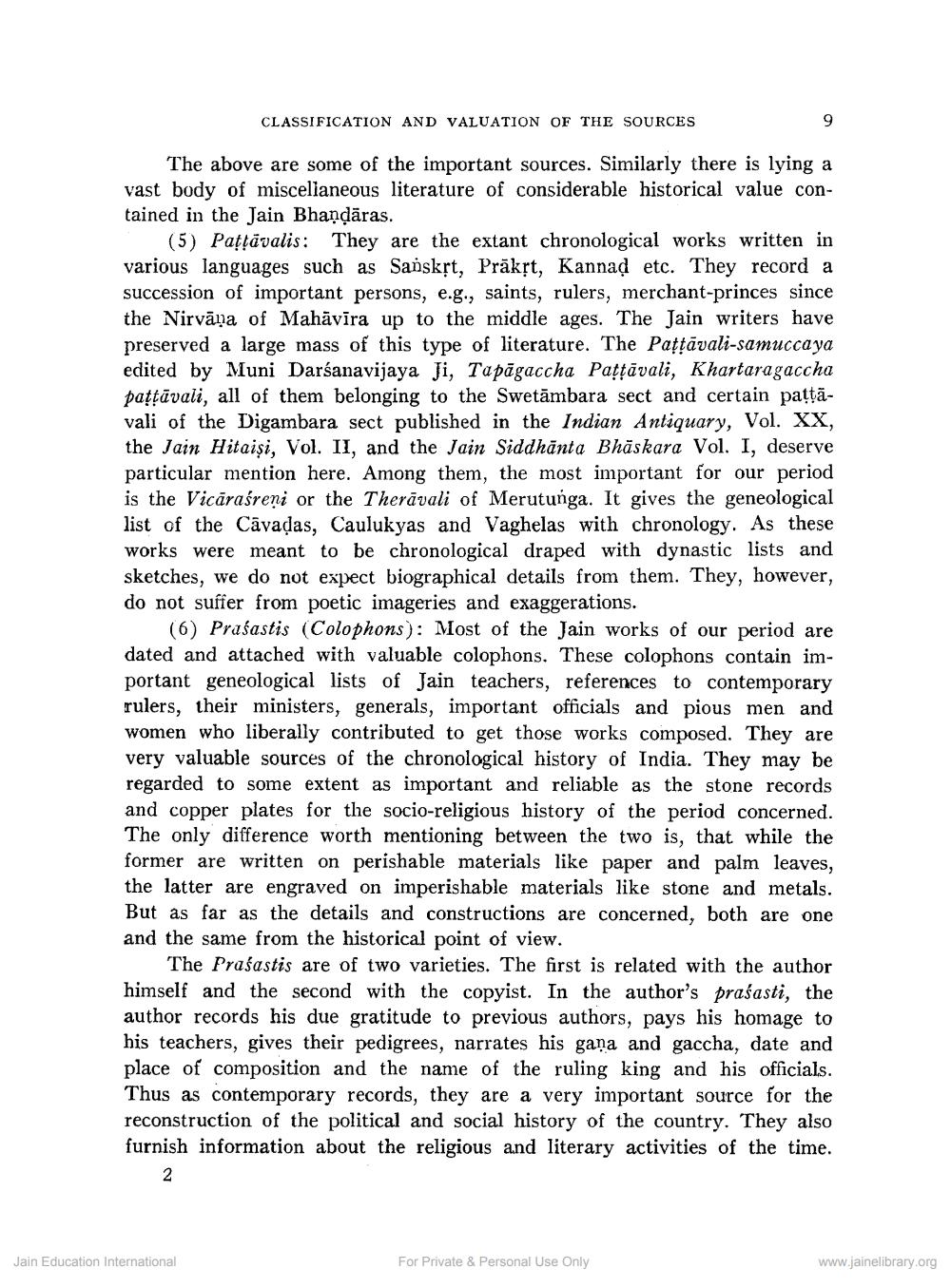________________
CLASSIFICATION AND VALUATION OF THE SOURCES
The above are some of the important sources. Similarly there is lying at vast body of miscellaneous literature of considerable historical value contained in the Jain Bhandaras.
9
(5) Pattavalis: They are the extant chronological works written in various languages such as Sanskrt, Präkrt, Kannad etc. They record a succession of important persons, e.g., saints, rulers, merchant-princes since the Nirvana of Mahavira up to the middle ages. The Jain writers have preserved a large mass of this type of literature. The Paṭṭavali-samuccaya edited by Muni Darśanavijaya Ji, Tapagaccha Paṭṭāvali, Khartaragaccha pattavali, all of them belonging to the Swetambara sect and certain paṭṭāvali of the Digambara sect published in the Indian Antiquary, Vol. XX, the Jain Hitaisi, Vol. II, and the Jain Siddhanta Bhaskara Vol. I, deserve particular mention here. Among them, the most important for our period is the Vicaraśreņi or the Theravali of Merutunga. It gives the geneological list of the Cavadas, Caulukyas and Vaghelas with chronology. As these works were meant to be chronological draped with dynastic lists and sketches, we do not expect biographical details from them. They, however, do not suffer from poetic imageries and exaggerations.
(6) Prasastis (Colophons): Most of the Jain works of our period are. dated and attached with valuable colophons. These colophons contain important geneological lists of Jain teachers, references to contemporary rulers, their ministers, generals, important officials and pious men and women who liberally contributed to get those works composed. They are very valuable sources of the chronological history of India. They may be regarded to some extent as important and reliable as the stone records. and copper plates for the socio-religious history of the period concerned. The only difference worth mentioning between the two is, that while the former are written on perishable materials like paper and palm leaves, the latter are engraved on imperishable materials like stone and metals. But as far as the details and constructions are concerned, both are one and the same from the historical point of view.
Jain Education International
The Prasastis are of two varieties. The first is related with the author himself and the second with the copyist. In the author's pralasti, the author records his due gratitude to previous authors, pays his homage to his teachers, gives their pedigrees, narrates his gana and gaccha, date and place of composition and the name of the ruling king and his officials. Thus as contemporary records, they are a very important source for the reconstruction of the political and social history of the country. They also furnish information about the religious and literary activities of the time. 2
For Private & Personal Use Only
www.jainelibrary.org




